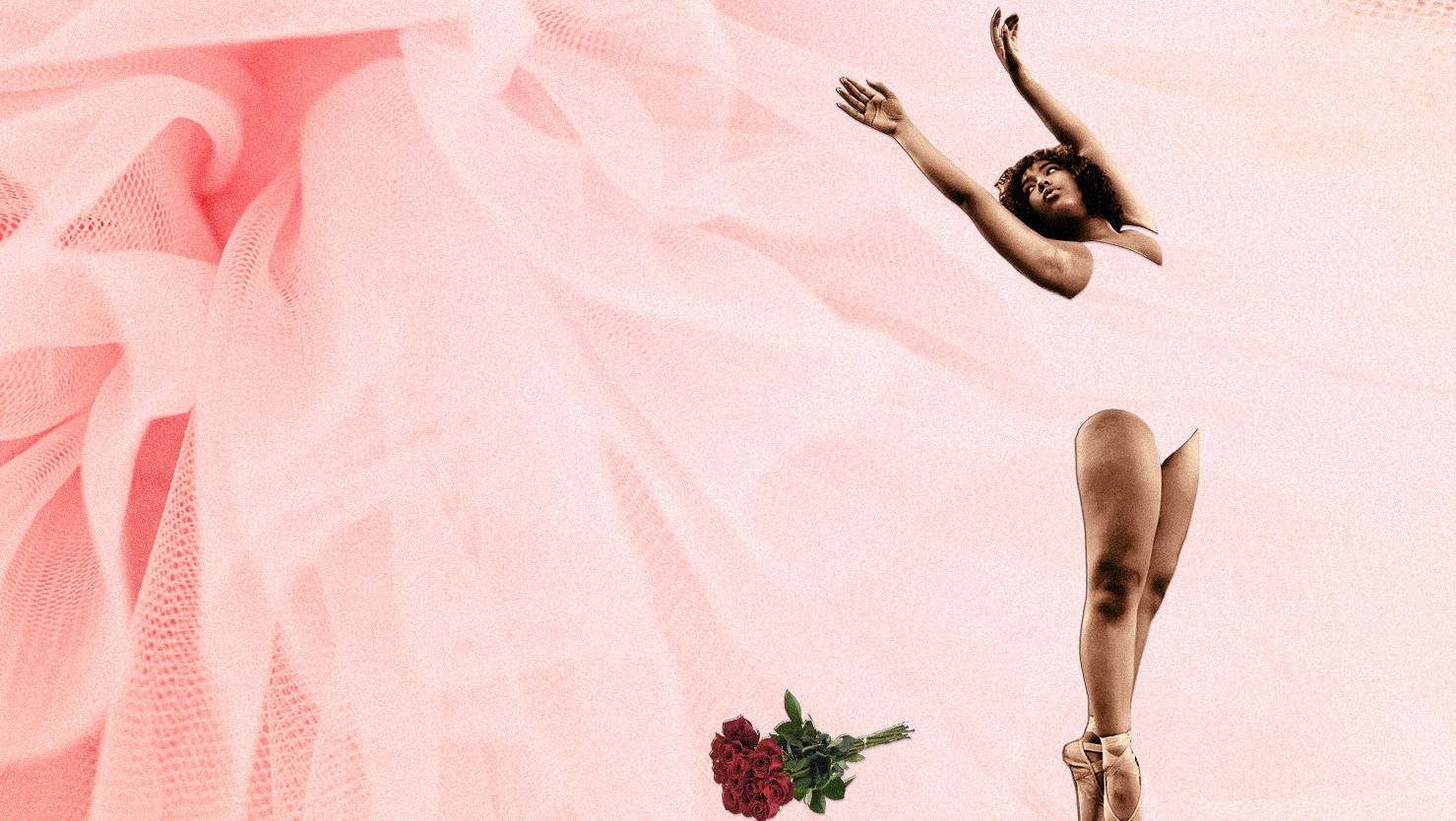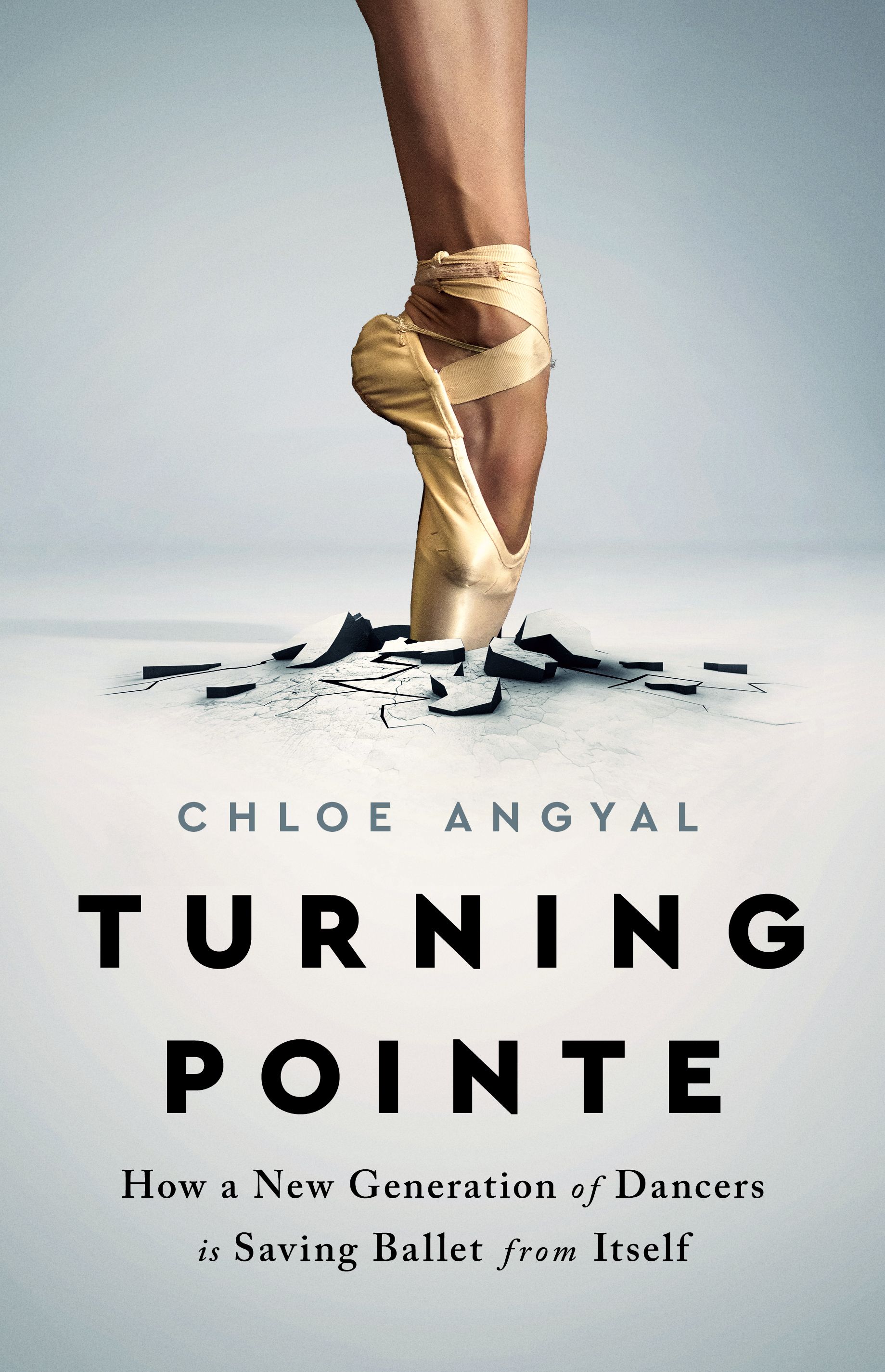The Unbearable Whiteness of Ballet
In an exclusive excerpt from her new book Turning Pointe, contributing editor Chloe Angyal lays out the ways that white supremacy is embedded in ballet's most basic foundations.


Wilmara Manuel and her 11-year-old daughter, Sasha, were at the world finals of a ballet competition, the Youth America Grand Prix, in 2015 when it happened. Shortly before the competition began, the young dancers were on the performance stage with their parents, warming up and preparing to dance the solos they’d been rehearsing for months.
As Wilmara, who is Black and originally from Haiti, and Sasha, who is biracial, stood there, a young white dancer looked around the stage, checking out the competition. “And her eyes land on Sasha,” Wilmara remembers, “and I saw her look [Sasha] up and down, and then look at her mom.
“And her mom said, ‘Don’t worry. They’re never really good anyway.’ ”
Wilmara did her best to contain her shock. Sasha didn’t hear what the white mom had said, and Wilmara wasn’t about to tell her, because “that’s not the thing I want to discuss 10 minutes before she takes the stage.” But Sasha could sense that something was amiss. “Just the look on my face, she was like, ‘What? What happened? What did she say?’ ” Wilmara brushed her daughter off.
Don’t worry. They’re never really good anyway. An entire worldview of white resentment of Black progress and excellence passed quietly from mother to child in just seven words.
That white mother could not fathom that Sasha, a biracial child with a Black mother, might be really good—as in very good, or truly good—at a traditionally white art form at which her child was presumably also quite proficient. She could not imagine that Sasha might deserve to be at that competition, might have qualified on her merit—her talent and skill and persistence—rather than because of what she might consider a misguided or even unjust attempt to diversify ballet by lowering standards. They’re not really good, but they are allowed to be here. In this space that is rightfully yours, in this art form that is rightfully yours. They’re never as good as the white girls, a sweeping generalization that grants no individuality, no humanity, to any nonwhite dancer. They’re all the same, and they never deserve to be here. But don’t worry. Your excellence is a given. You belong here, while their presence is conditional or even ill-gotten.
A few minutes later, Sasha took the stage and performed her solo. She ended up placing ahead of that white dancer.
Get exclusive access to fashion and beauty trends, hot-off-the-press celebrity news, and more.
From then on, Wilmara traveled with Sasha to every competition, paying the additional travel costs to make sure that, if something like that ever happened again, she’d be there to support her daughter.
“That has stuck with me,” she says. “And it’s one of the reasons I make the sacrifice and I go with her everywhere. Even if there are others going, I feel like I need to be around should comments like that pop up. I just don’t feel like I can take that chance, you know? And what cracks me up is that . . . she doesn’t even look as dark as I do, which makes me feel like, ‘Oh my God, if you were darker, like, what else?’ ”
Sasha grew up in a suburb of Indianapolis and is now 16. She trains at the Royal Ballet School in London, an exclusive training ground that serves as a feeder school for the Royal Ballet. It’s widely acknowledged to be one of the best ballet schools in the world.
Wilmara says that people often express their surprise at the quality of Sasha’s training and technique. “Oh wow, you’re really good,” Wilmara says by way of example. “Where do you train? Have you been dancing for a long time?” She says that while she tries to give these white people the benefit of the doubt, she knows what they usually mean, and she’d prefer they just come out and say it: “I’m surprised you’re that good. You’re Black and you’re dancing and you’re good.”
Now that Sasha is a little older, Wilmara talks to her about the racist assumptions embedded in those surprised comments. “You know she’s asking because she doesn’t think a person of your color can do this,” she’s told Sasha, who now “gets it when she hears that tone of voice.”
And, she says, she’s been frank with her daughter about the kind of resistance she should expect from the overwhelmingly white ballet establishment if she keeps excelling—which she shows every sign of doing.
It’s moms who do the bulk of the work of ballet parenting: the sewing of costumes, the schedule keeping for rehearsals and recitals. And when you’re a ballet mom to a dancer of color, there’s an even higher price to pay.
“Not everybody’s gonna be thrilled,” Wilmara says, paraphrasing her conversations with Sasha. “Even if you’re not a dancer of color, it’s cutthroat. And on top of that, you are a dancer of color, and so that poses another threat in some ways. So you have to be mindful of your things and what you are doing, and know what things are okay, and [pay attention to] when you are uncomfortable.”
This emotional labor, the work of helping young dancers understand what “that tone of voice” means and why it’s being used—or the work of deciding whether to tell your child about the racist remark you just overheard or absorb it yourself and shield them from it—is a part of parenting not demanded of mothers of white dancers.
Then there’s the payment in time and money required of Wilmara to make sure that Sasha’s ballet experience is as fair and worry-free as possible. Once, at a competition, Wilmara forgot to color in the “nude” pale pink straps on one of Sasha’s competition costumes. Wilmara scrambled to find brown foundation because none of the vendors at the competition had a leotard in Sasha’s skin color.
“Come on, people, you are here,” Wilmara remembers thinking. “There may not be that many [dancers of color], but they are all here and you should be able to bring various shades of nude leos.”
Succeeding in ballet, or even just surviving, requires extra talent, extra work, extra resilience, and extra sacrifices from dancers of color, especially Black and brown dancers, and their parents. White ballet moms might have to talk to their white daughters about how cutthroat ballet is. But they don’t need to issue additional warnings about how a white girl’s success will be received by that cutthroat culture, because almost all the successful girls and women in ballet are white.
“They’ve had to grow up a lot faster,” Wilmara says of Black and brown ballet dancers. “I think the ballet world makes you grow up a lot faster, but on top of that,” there are the “extra hurdles that other dancers don’t have to think about.” There are the overtly racist comments backstage before a performance and the subtly racist “compliments” after. There is time spent frantically searching for the right leotard or adapting the default pink leotard. There is the knowledge, internalized first by parents and then by their kids, that if you make it over all those hurdles your success will be viewed with suspicion and resentment—that ballet does not have a “diversity” problem; it has a white supremacy problem.
“Our kids,” Wilmara says, “are thinking about this and thinking about it early on.”
The organizing principle of ballet—of training, of performance, of making a ballet body—is control. Control of your rigid torso while your foot shoots upward from the hip in a battement. Control of a silent and compliant class of otherwise giggly 9-year-old girls. “The traditional and classical Europeanist aesthetic for the dancing body is dominated and ruled by the erect spine,” wrote dance scholar Brenda Dixon Gottschild in her landmark book The Black Dancing Body. “Verticality is a prime value, with the torso held erect, knees straight, body in vertical alignment. . . . The torso is held still.”
It all demands control. Control of your smiling face as your feet scream in your pointe shoes at the end of a long pas de deux. Control of your weight, of your turnout, of your stretched and strengthened feet that now arch into a shape no ordinary foot can make. “The ballet audience, attuned and habituated to view control as a prime value, applaud its display and are embarrassed when it isn’t fulfilled,” Gottschild wrote.
Discipline, order, adherence to strict and unquestioned rules. That’s what ballet is. When Gottschild asked Seán Curran, a white dancer and choreographer who performed with the Bill T. Jones/Arnie Zane Company, what he pictured when he thought of white dance or white dancing bodies, he said, “Upright. . . . For some reason, ‘proper’ stuck in the head a bit, something that is built and made and constructed rather than is free or flows.” A body that is rigid, obedient, and disciplined, remade from something natural and unruly into something refined and well behaved. Proper. “Whiteness,” Curran said, “values precision and unison.”
Curran’s assessment identifies a central underlying prejudice of white supremacy: the belief that people of color, and their bodies, are wild. Uncivilized, animalistic, subhuman. That white people—who, by contrast, are assumed to be organized and civilized—have both a right and a responsibility to tame that which is untamed and impose order, precision, and unison on it. To suppress and control that which is savage; to press it into something that approaches whiteness but will never be truly white and thus never truly equal.
This is the logic that underpinned white colonization and American slavery. It is also the logic that makes racial segregation possible: that which is pure and organized must be kept separate from that which is profane and undisciplined. And central to this worldview is the idea that the work of white supremacy is unending, not because white supremacy is flawed, but because the very people it seeks to suppress are inherently inferior, naturally incapable of complying. Because of some inborn lack—of will, of understanding, of discipline—people of color will never fully obey, never properly assimilate, never be redeemed by whiteness. In this way, white supremacy perpetuates itself, justifying both its worldview and the permanent need for its existence.
It’s little wonder, then, that ballet—with its fixation on control, discipline, and uprightness—wraps itself so neatly around whiteness. It makes sense that white Americans, reared on the belief that whiteness is synonymous with order and refinement, also believe that people of color have no place, or a limited place, or a conditional place, in classical ballet.
Furthermore, it is easy to see how the ideal ballet body—so controlled, so upright—is everything that white supremacy imagines a Black body is not. And because of deeply ingrained American cultural associations with musculature, loose movement, brute force, and untamed sexuality, the Black body is believed to be everything a ballet body is not permitted to be.
“When we talk about the ballerina,” says Theresa Ruth Howard, a former dancer and a teacher, diversity strategist, and the founder and curator of the digital ballet history archive Memoirs of Blacks in Ballet (MoBBallet), “we’re talking about the ideal, our stereotype of the desirable woman, and that is reserved for white women.”
Howard has made a career of helping the people who run ballet companies and schools to examine their ideas about what makes for a “good” ballet body, asking them to question their biases about the inherent fitness of white bodies and unfitness of other bodies, especially Black bodies. She says that long-standing racist tropes about Black women’s bodies make Blackness and ballerinas seem antithetical.
“You have the trope of either the jezebel, the mammy, or the workhorse of the Black woman,” which are incompatible with desirability, fragility, and sexual purity, the ideal of white womanhood at the heart of the ballerina’s appeal.
“She’s desired. It’s the epitome of beauty, of grace, of elegance, and these are not adjectives that are assigned to Black women,” Howard says. “Especially not darker-skinned Black women. This is why the closer you look to the white European aesthetic as a Black woman, the better chance you have at occupying that role. Especially at a higher level.”
Despite the long tradition of Latin American dancers carving out successful professional careers in the U.S. and the enormous success of Misty Copeland—a light-skinned Black dancer whose ascent to the pinnacle of American ballet was a watershed moment for Black dancers and audiences alike—the archetypal ballerina is still a pale-skinned white woman with slender limbs, negligible breasts and hips, and long, sleek hair. In the American cultural imagination, the ballerina is still white.
George Balanchine famously said that “ballet is woman,” but that’s not the whole truth. Ballet is white woman, or, perhaps more precisely, white womanhood. Ballet is a stronghold of white womanhood, a place where whiteness is the default and white femininity reigns supreme.
Excerpted from Turning Pointe: How a New Generation of Dancers Is Saving Ballet from Itself by Chloe Angyal. Copyright © 2021. Available from Bold Type Books, an imprint of Hachette Book Group, Inc.

Chloe Angyal is a journalist who lives in Iowa; she is the former Deputy Opinion Editor at HuffPost and a former Senior Editor at Feministing. She has written about politics and popular culture for The New York Times, The Washington Post, The Atlantic, The Guardian, New York magazine, Reuters, and The New Republic. Angyal has a Ph.D. in Arts and Media from the University of New South Wales.

